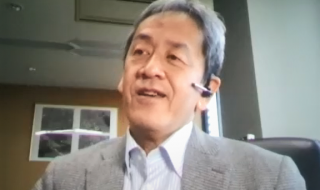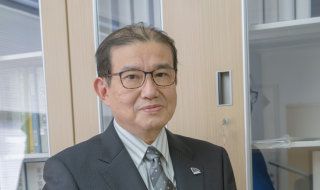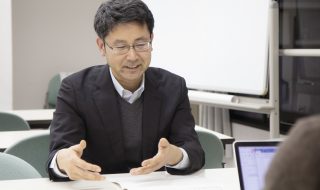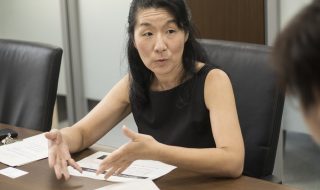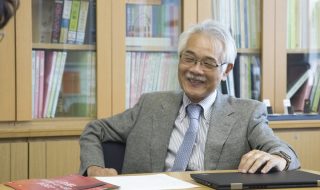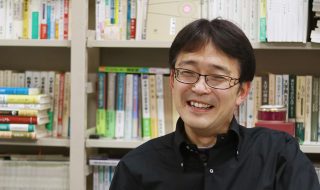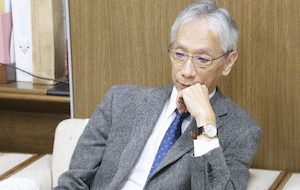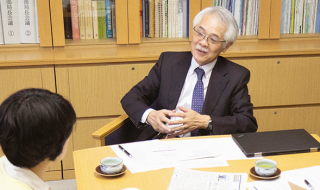Approach Taken for the First-Year Course “Pharmaceutical Research SGD Seminar” at the Faculty of Pharmaceutical Sciences
What is the course “SGD Seminar” like?

Yamashita: It is one of the courses intended for the first-year students. The course aims to help the students acquire communication skills, foster logical thinking skills, train problem-setting/solving skills, and experience group work sessions as prospective researchers or medical professionals.
It is implemented as a class combining the fourth and fifth periods on Wednesdays in the first semester. Although it is not compulsory, 83 of 86 freshman students in the Faculty of Pharmaceutical Sciences take it. The Faculty strongly recommends that students take the course.
The acronym SGD stands for “Small Group Discussion.” Students form small groups of four or five. They hold discussions in four lecture rooms, each packed with about 20 students. In some cases, two lecture rooms are used, each holding about 40 students, depending on the content dealt with in class.
The class is run using so-called active learning methods, such as brainstorming, the KJ Method, debate, interviews, and presentations.
We have heard that the course underwent a substantial renewal this academic year. What were the circumstances that led to the renewal of the course?

Takasu: The Faculty of Pharmaceutical Sciences is organized into the Division of Pharmaceutical Sciences (four-year program; most students in the division are supposed to go on to the master’s course), designed principally to develop drug discovery researchers, and the Division of Pharmacy (six-year program), intended mainly to train clinical investigators with qualifications as a pharmacist. Until the last academic year (FY 2017), the divisions gave entrance examinations separately. This academic year (FY 2018), a change was made to hold a general entrance examination across the divisions. Students will choose the Division of Pharmaceutical Sciences or the Division of Pharmacy at the end of the third year. As a result, this course underwent the renewal as a first-year education program for all freshman students enrolled in the Faculty of Pharmaceutical Sciences.
While the previous SGD Seminar was provided exclusively to students in the Division of Pharmacy, the recent renewal offered the course to all students in the Faculty of Pharmaceutical Sciences to enable them to foster fundamental competencies as a researcher or medical professional, while keeping in mind the goal of helping them have clear future prospects.
It is desirable that this course be compulsory. However, for several reasons, it remains a strongly recommended course for this academic year. The reasons include that if it is compulsory, some students might fail to be promoted due to failure to earn credits for this course, that students enrolled in Kyoto University probably include those who are not good at taking active learning-style classes, and that it is the first experience for the teaching staff to run this course this academic year.
What factors were of particular importance in the renewal?
Takasu: Until last year, there was one thing I realized as I watched past students in the Division of Pharmacy. Students who had taken the previous SGD Seminar often exhibited higher discussion skills later when they were appointed to their respective supervisors’ laboratories and had built learning communities in which they could share knowledge when they encountered things they didn’t understand. Therefore, for the recent renewal, I have been mindful to help students become closely acquainted with each other and, if possible, with the teaching staff as well.
On top of this, another goal is to help students develop the mindset of a researcher through discussions specifically between students in the Faculty of Pharmaceutical Sciences, such as a go-or-no-go discussion about animal testing.
Yamashita: The world has things that remain unanswered. It is important for students to develop a mindset for solving those things by themselves. They worked hard on things that had answers until they graduated from high school. However, issues present in society are diverse and each individual has his or her sense of value. I hope that students will understand this and have insights about their suitable behaviors.
We have heard that several teachers are involved in planning and administering the course. What difficulties did you encounter?
Takasu: It became necessary to change the curriculum along with reorganizing the Faculty of Pharmaceutical Sciences. As a consequence, it was agreed that the Academic Affairs Committee would develop the overall design, with the younger professors (Professor Yamashita and Professor Takasu) taking a leading role. Associate Professor Kakizawa, Lecturer Yano, and Lecturer Tsuda joined to form a working group of five members. These members from their respective fields of physical chemistry, organic chemistry, medical pharmacy, and life sciences were designated by the head of the Academic Affairs Committee. We spent over a year planning the course for first-year education to feature activities such as debates and visiting instructors’ laboratories.
The SGD Seminar required a total of ten and some number of teachers. As a general rule, the working group asked each instructor to be involved in the SGD Seminar for three years. I think it is difficult for the teaching staff to share a common awareness. The current year is the first academic year of the renewal. The preparation required very hard work. The renewal introduced totally new attempts. In addition, the classg size increased. From my viewpoint, there have been many problems, including coordination between lead teaching staff members. Nevertheless, after implementing the course and actually observing the responses of students and instructors, I feel that we have set up a better learning environment.
Yamashita: The working group provided draft ideas. The teachers in charge expressed their views about the draft ideas. Revised ideas were shared among the people involved, as a course of action to follow. We made these arrangements every week for one to two hours the evening before the class. On the day of the class, we gathered well before the class to check the handout.
Takasu: It is very hard on the planning side. Teachers in charge of the class need to understand the plan and figure out how to correct and best use it. They seem to be struggling.
What do you expect for the growth of students achieved through this course?
Takasu: The fundamental goal for this course came from the idea of helping the students in the Faculty of Pharmaceutical Sciences have a mindset oriented more toward self-motivated learning. The attempt was new to the teaching staff as well. I feel that the teaching staff have assigned more-than-appropriate tasks to the students. The teachers were accustomed to giving one-sided lectures. The course seems to have presented them with a good opportunity to learn the need for devices for assigning tasks. Kyoto University has a lot of settings for students to drive themselves in deepening their learning. For students to use those facilities, I’m planning to incorporate schemes for encouraging groups of them to be engaged in after-class learning activities beginning in the next academic year.
I hope the course serves as a way for students to form learning communities, such as study groups, in the future when they learn specialized courses.
What are the impressions the teaching staff had after implementing the course in practice?

Takasu: Almost all instructors at the Faculty of Pharmaceutical Sciences are involved in the course because students visit their laboratories during the class. I felt the need for the entire teaching staff, including interviewee instructors, to share a common awareness. On the course-planning side, I hoped students would collect and compile information through interviews. However, it is probably often the case that host instructors furnish students with information earlier than appropriate.
Yamashita: The instructors in the Faculty of Pharmaceutical Sciences have mostly transferred their knowledge to students in a one-sided manner by way of lecturing. They are perhaps not accustomed to letting students think for themselves.
Takasu: The teaching staff in charge of the course share a common awareness. However, they need to use their time to hold meetings for the class, and the burden has been increasing. In addition, in running the class, some instructors are not familiar with discussion methods. As a result, there have been more or less class-to-class differences.
Meanwhile, many events made me happy. For instance, instructors who observed the class had high regard for the students expressing their ideas actively. A training camp is held annually in early May for freshman students faculty-wide. In this academic year, group work activities were smooth, right from the beginning. I felt that the SGD Seminar had provided students with a beneficial experience.
After implementing the course, what do you think about students’ responses?
Yamashita: Some students tend to often play a leading role in group work, while others don’t. Group work participants need not only to contribute to discussions, but also to encourage others to contribute to or join discussions. This is necessary in terms of leadership and teamwork. I want to reconfirm this in the next class. In this regard, I’d like to hold more teacher meetings to discuss matters such as what rubric is easy to use and what explanations should be given to students for peer assessment. At the same time, I’d like to do constant reviews even during the semester, with your help.
One difficult challenge emerging recently is that the way students take part in college classes varies depending on how much they have experienced active learning at high school. I really have felt tangible level differences between students who studied at a SGH (Super Global High School) or a SSH (Super Science High School) and those who studied at other high schools in terms of group work and using PowerPoint presentations in active learning activities at college. The teaching staff also need to learn how to manage active learning to successfully run group work, even with the above student differences I just mentioned.
If you have any specific plan for the future, could you tell us about it?
Takasu: A large number of students in the Faculty of Pharmaceutical Sciences tend to want immediate answers. However, considering drug discovery research, I hope students understand things remain unanswered in the world and that it is important to solve them one by one.
The members involved in running the course will not change for the coming three years. I’d like to steadily improve the class management and assessment by way of student questionnaires, for instance.

Photographed by: Ryohei KIZAKI (Assistant Technical Staff, Center for the Promotion of Excellence in Higher Education, Kyoto University)
(Recording day: June 20, 2018)
List of Interviews




